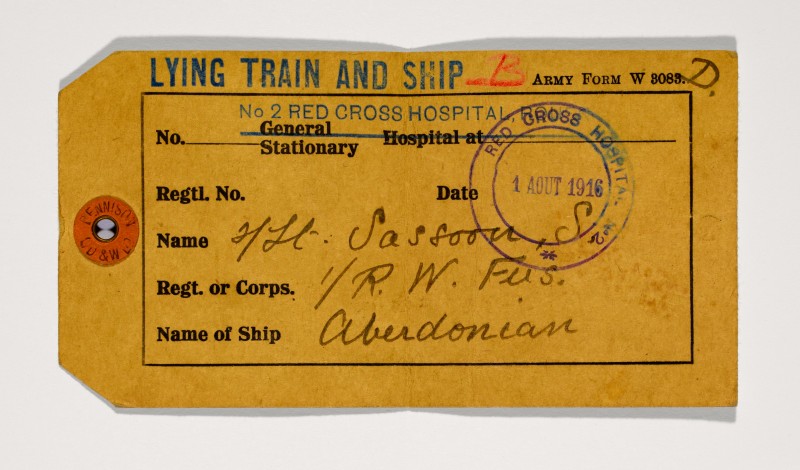An inscribed presentation copy of the second edition, containing Wordsworth's preface and a cancel rectifying the omission of fifteen lines of Wordsworth's 'Michael' from the book. Only eight copies of the second edition with the cancel are known to exist.
Search FNL grants since 1931
The papers are divided into eleven groups, ten of them comprising the accumulations of title deeds and other estate records of the successive families who owned the Aberglasne Estate, beginning with the Rudds, who acquired the estate from the Thomases in the 17th century.
Siegfried's son George Sassoon sold many of his father's papers, some of which were acquired by Cambridge University Library; the 'Remaining Archive' of papers in his possession at his death in 2006 include a series of war diaries and notebooks, 1915-19, containing journal en
Papers mostly relating to the 17th-century Fen Drainage Project accumulated by Sir Miles Sandys, 1st Bart. (1563-1645), his son Sir Miles Sandys and the elder Sir Miles's great-nephew, Col Samuel Sandys (d.1685).
Dr Bent Juel-Jensen, a former Medical Officer to the University of Oxford, was one of the principal book collectors of his generation and a generous benefactor to the Bodleian Library, to which he made outstanding gifts of books in his lifetime.
Scott's account of the rediscovery of the Scottish Regalia, which were sealed up in 1707 by order of the Treasury Commissioners, and kept in a chest in the Crown Room of Edinburgh Castle, lest the sight of them should inspire separatist sentiment.
A rare and important publication drawing attention to the close ties between the women's dress reform movements in Germany and Scotland. It is a significant addition the Museum's holdings on these movements.
Sir John Vanbrugh (1664-1726) was Clarenceux King of Arms, an office he claimed to have acquired 'in jest' when he resigned it in 1725. The Grant, signed by Anstis and Vanbrugh, is calligraphically written and finely illuminated.
Paul Nash (1889-1946) spent more time and care on his illustrations of Sir Thomas Browne's famous work, first published in 1658, than on any other of his book projects. The present copy, no.
A volume of autograph contemporary copies of letters by Andrew Lumisden, antiquary and Secretary to Prince Charles Edward Stuart, for the year 1763.

